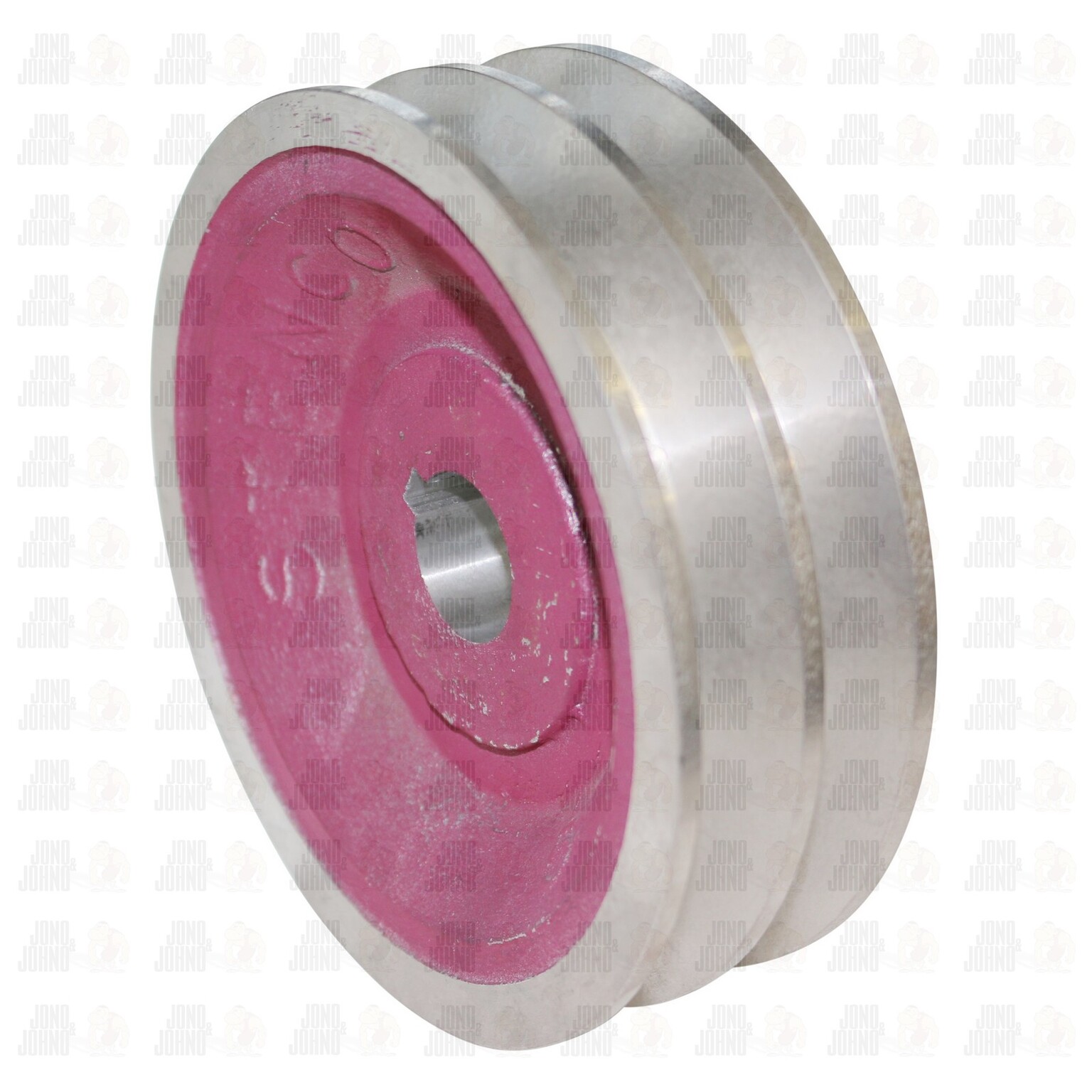

Identify the speed ratio and select the pulley


As a rule, choose a drive motor with an input torque greater than output torque requirements. Once this output torque requirement has been determined, proceed to choose the drive system. Determine the torque requirementĪs with other engineering design problems, product designers must first know about their timing belt-pulley application requirements, such as the output torque required to do the work. Designing and selecting parts for a timing belt pulley 1. This article presents calculations using the metric system of measurement. Source: Warut/Adobe Stockīelow details the essential information every product designer must know about timing pulley systems including basic definitions, sizing considerations and suitable pulley materials for efficient timing pulley systems. This will give the total inertia reflected back to the motor, which can be used for motor sizing and selection.Timing pulleys are among the most popular pulleys in the market. In this case, the total inertia of the moved mass (applied load, belt, pulleys, and coupling) should be divided by the square of the gear reduction, and then the inertia of the gearbox should be added. It’s common for belt driven systems to use a gearbox to increase torque, reduce speed, and reduce the inertia of the load reflected to the motor. J ph = inertia of hollow cylinder (pulleys, coupling) (kgm 2) Keep in mind that although the pulleys may have the same diameters (and radii), if one pulley is toothed (driven) and the other is smooth (idler), as is the case in many belt driven actuators, they will have different masses and, therefore, different inertias.Īlthough the solid cylinder approximation shown above is typically sufficient, more accurate inertia values for the pulleys and coupling can be found by taking into account that these components have a center bore and using the inertia equation for a hollow cylinder:

J p = inertia of solid cylinder (pulley, coupling) (kgm 2) The pulleys and the coupling can be treating as solid cylinders that rotate about their own axes, and their inertia can be calculated as: (Be sure to use the full, circular belt length - not just the length of the stroke.)Īlso, remember that the applied load is typically mounted to the belt via a carriage or table, so the mass of this part should be included in the mass of the applied load. R = radius of driven pulley (m) The belt and the load can be considered a point mass that rotates around the driven pulley.īelt manufacturers typically provide mass (or weight) information per unit length, so the mass of the belt can be found by multiplying the mass per unit length by the total length of the belt. J L = inertia of belt and applied load (kgm 2) The applied load and the belt can be modeled as a point mass that rotates around the driven pulley, and their inertia can be calculated as: Since inertia depends upon the axis around which the component rotates, we can start by considering the applied load and the belt together, since they both rotate around the axis of the driven pulley. The inertia of each component can typically be estimated with sufficient accuracy by using the standard inertia equations for simple shapes. In belt-driven linear motion systems, the motor has to overcome not only the inertia of the applied load, but also the inertia of the belt, pulleys, and motor coupling. In order for a motor to accelerate or decelerate a load, it must overcome the load’s inertia, or resistance to change in motion, as explained in Newton’s First Law.


 0 kommentar(er)
0 kommentar(er)
